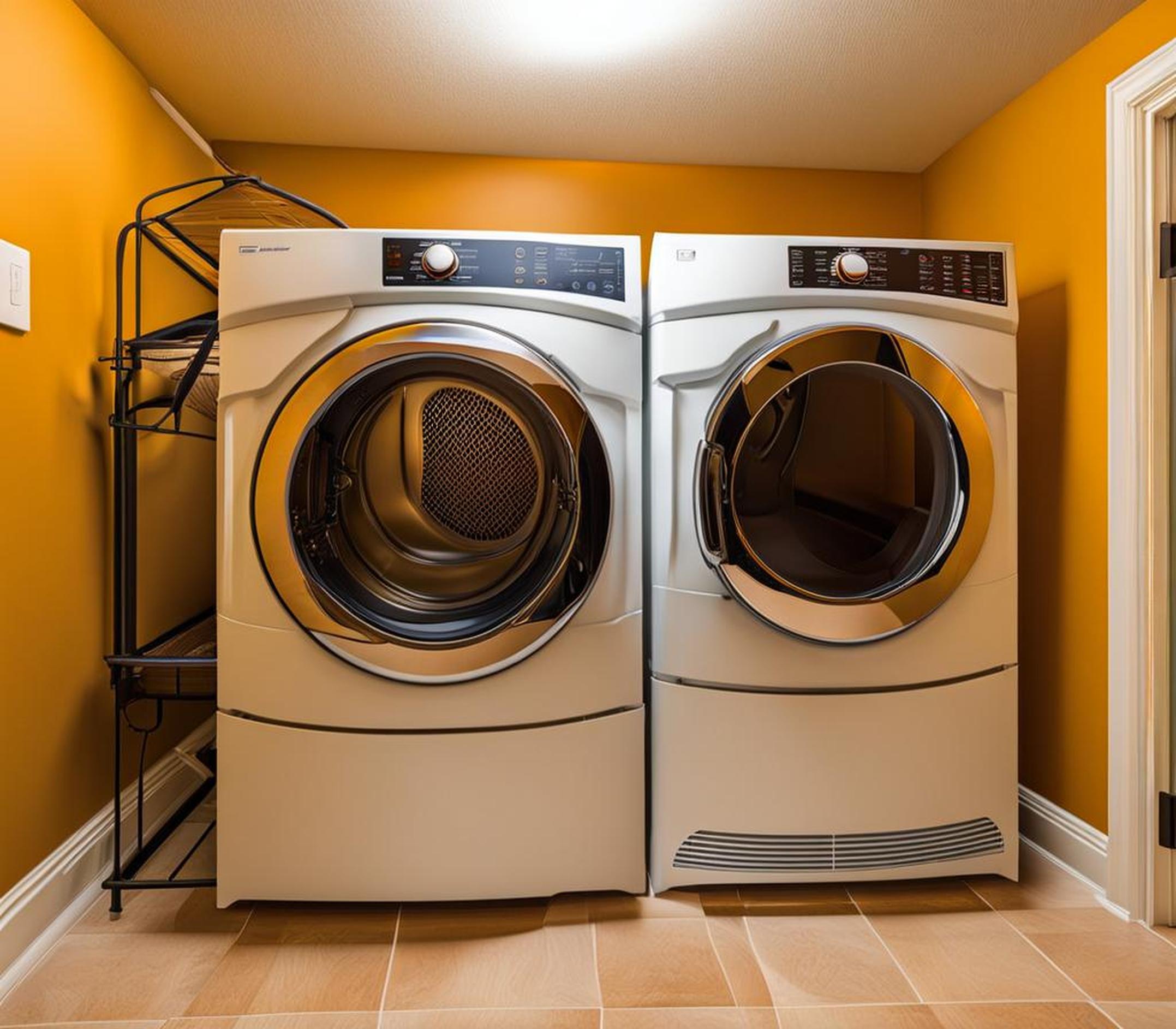Is your dryer taking forever to dry clothes or blowing cold air? An inefficient dryer that won’t heat is infuriating when you have piles of wet laundry to get through. But don’t kick your dryer in anger just yet! Understanding why your dryer isn’t heating properly is the first step to getting it fixed fast.
We’ll walk through the top 5 most common reasons dryers lose heat and simple ways to diagnose the root cause yourself. With a few basic tools and safety precautions, you can troubleshoot whether it’s a simple lint buildup or a part like the heating element that needs replacement.

Clogged Lint Trap or Vent
Lint trap maintenance is dryer repair 101, but it’s easy to forget this crucial task. Over time, lint inevitably builds up inside the trap, ductwork, and exterior vent. If excessive lint blocks airflow, sensors trigger the safety switch to shut off your dryer’s heat source until the airway is cleared. Essentially, your dryer cuts power to prevent a fire hazard.
Clear Lint Debris from Start to Finish
Carefully remove the trap and use your fingers or a lint brush to scoop out clumps of lint around the opening and screen mesh. Pay special attention to corners where lint gets stuck. Once the trap is clean, check the interior ductwork with a vent cleaning kit. Use the flexible cleaning rods to pull out lint down the full length of the duct, through to the outside vent hood.
Warning Signs Point to Lint as the Culprit
How can you tell a clog versus an actual broken part? Warning signs of excess lint include longer drying times that keep getting worse, a layer of lint visible around the drum seal, or noticing the flapper on the external vent hood is stuck shut. Taking 10 minutes to deep clean lint buildup restores airflow and allows normal dryer function.
Electrical Supply Issue
Like an oven, electric dryers require a 240-volt power supply delivered through a dedicated 30-amp circuit with two hot wires. If the circuit breaker handling one of these wires trips, the result is no heat. Start troubleshooting an electrical supply problem at your main breaker panel. Dryers should be clearly labelled, with separate breakers for the motor/drum and heating element.
Reset Tripped Breaker
If you find the breaker powering the heating element has flipped to OFF, flip it fully to ON to reset it. This may resolve a no heat issue if the safety switch tripped due to overloading the motor. However, if that breaker immediately trips again or fails to restore heat, it likely needs replacement by an electrician.
Heating Element Could Be Burned Out
Another electrical possibility – the heating element that generates the hot forced air has burned out after years of use. Carefully inspect the element for visible cracks or breaks. Use a multimeter to check if it still has continuity. If the heating element tests as faulty, search for your specific dryer’s replacement part online to DIY install.
Gas Dryers: No Fuel Supply
Assuming you keep up with paying utility bills, what interrupts gas flow to leave a dryer stone cold? One common culprit is a manual shut-off valve somewhere along the gas line. Verify that the valve tapped off your main gas line going to the dryer itself is in the open position.
Is the Pilot Light Still Lit?
Older gas dryers rely on a continuously burning pilot light to ignite the main burner. Fold a piece of paper into an accordion shape and hold it near the gas burner tubes – if no suction pulling paper upwards, the pilot light may have gone out. Carefully re-light according to instructions for your brand, then test that main burner ignites once pilot has stabilized.
Faulty Thermostat
The thermostat monitors running temps, signaling when more heat is needed. If it inaccurately reports temps (or fails entirely), the result is a dryer not reaching proper warmth. The thermostat is typically located near the back of the drum, exposed to exhaust airflows. Lint and dust coating its sensors can interfere with operation over years of use.
Testing the Thermostat
Unplug the unit then use a multimeter to check the thermostat’s ohm range based on your specific model. If readings are way off from specifications, the thermostat should be replaced. Some DIYers attempt this, but installing a new thermostat precisely takes skill – better left to pros in many cases.
Accidentally Set to Air or No Heat
Before assuming everything is broken and repairs are urgent – check if someone changed settings without realizing. Many modern dryers include an air fluff or damp dry mode. While handy for delicate and heat-sensitive items, not appropriate for heavy loads!
Select High Heat Setting
Check your dryer display or dial to see if it’s set to no heat/air fluff/eco setting versus a High, Normal, or Max heat option. Choosing the highest temp then retesting should restore full drying power. Just don’t forget to dial back down later for lighter items!
Step-by-step, you can get to the bottom of why your dryer won’t heat up properly. Safely testing components like heating elements and thermostats takes DIY electrical know-how – if that’s not your forte, hire an appliance repair technician. But anyone can start troubleshooting with easy airflow and lint inspections first before replacing major parts.
